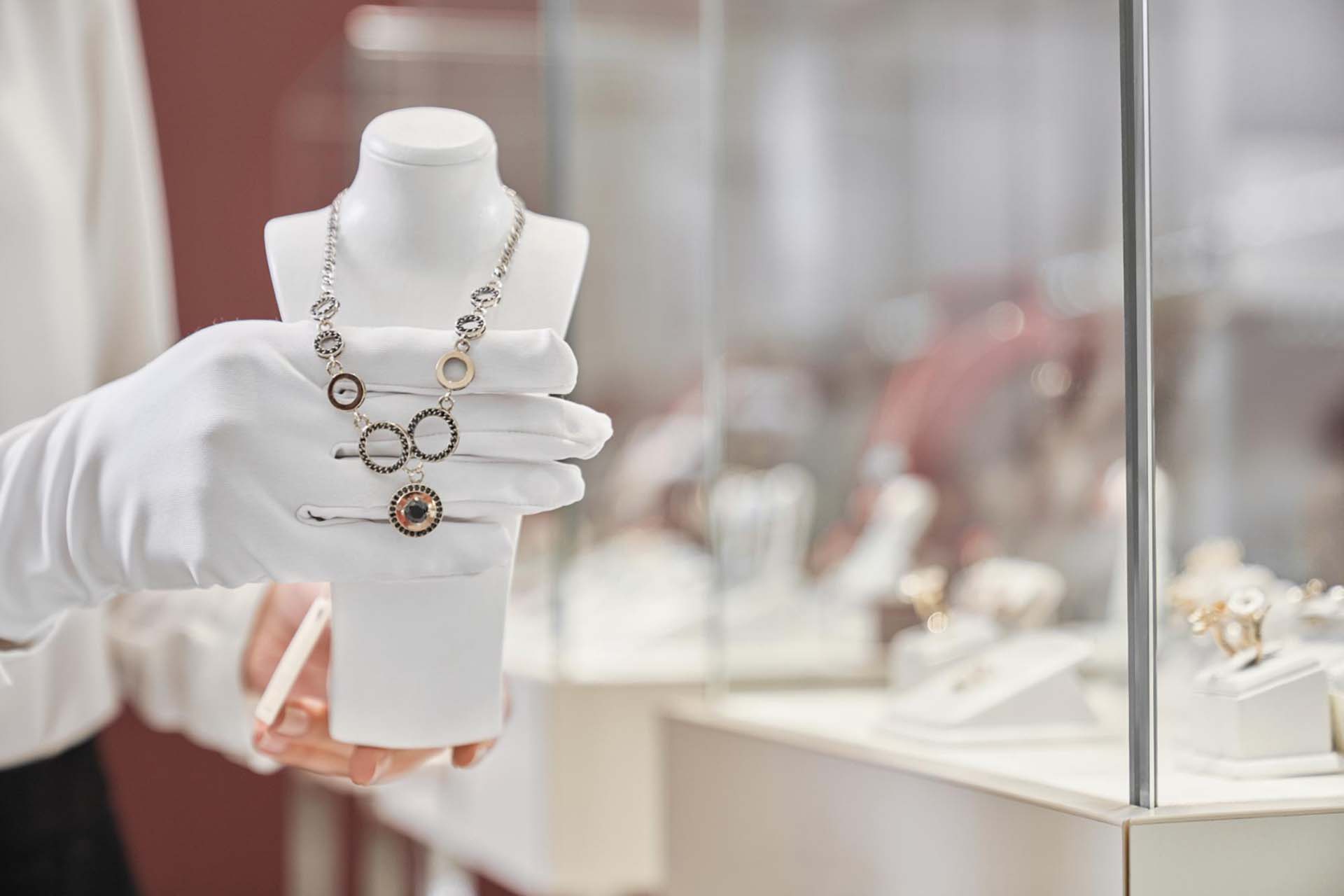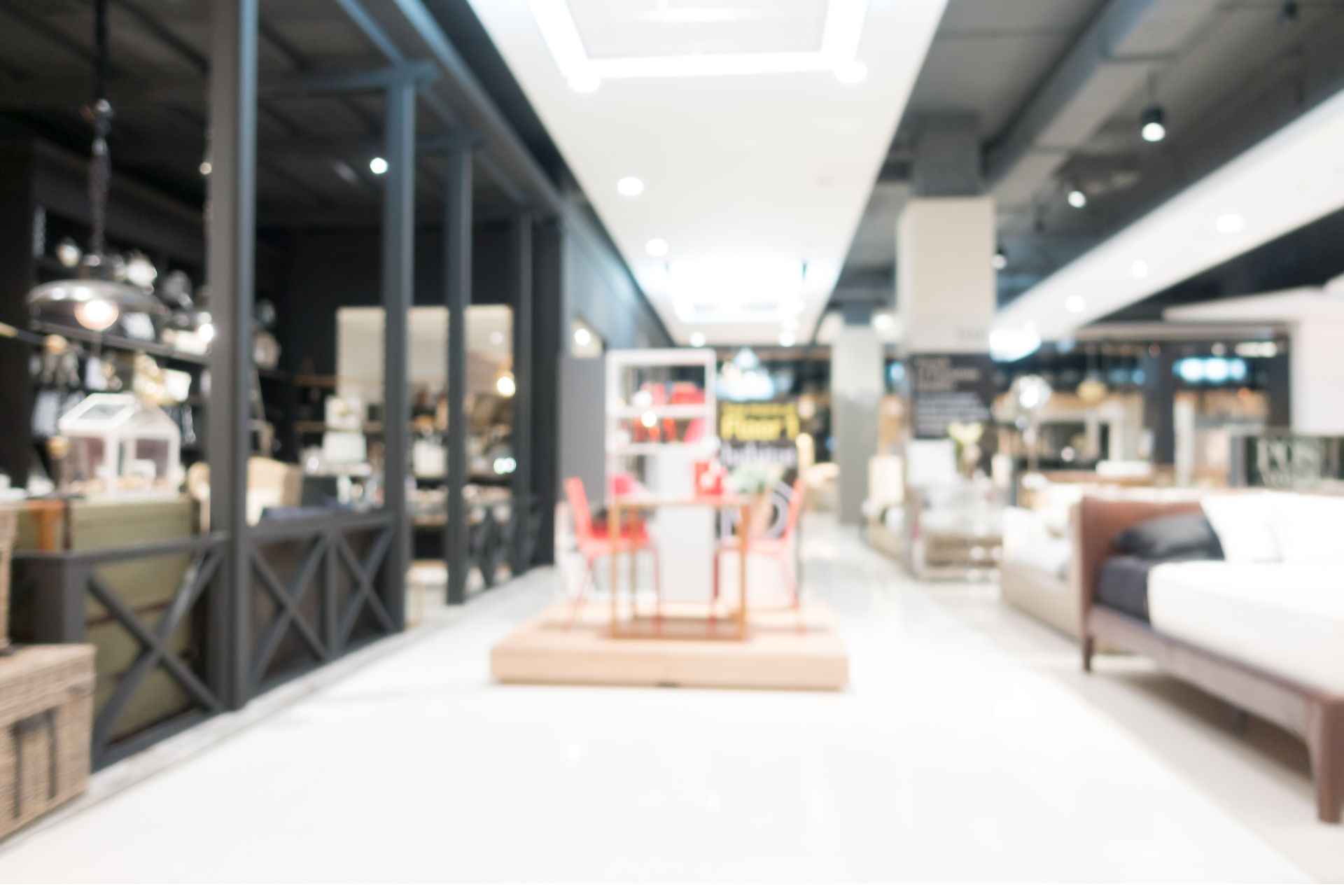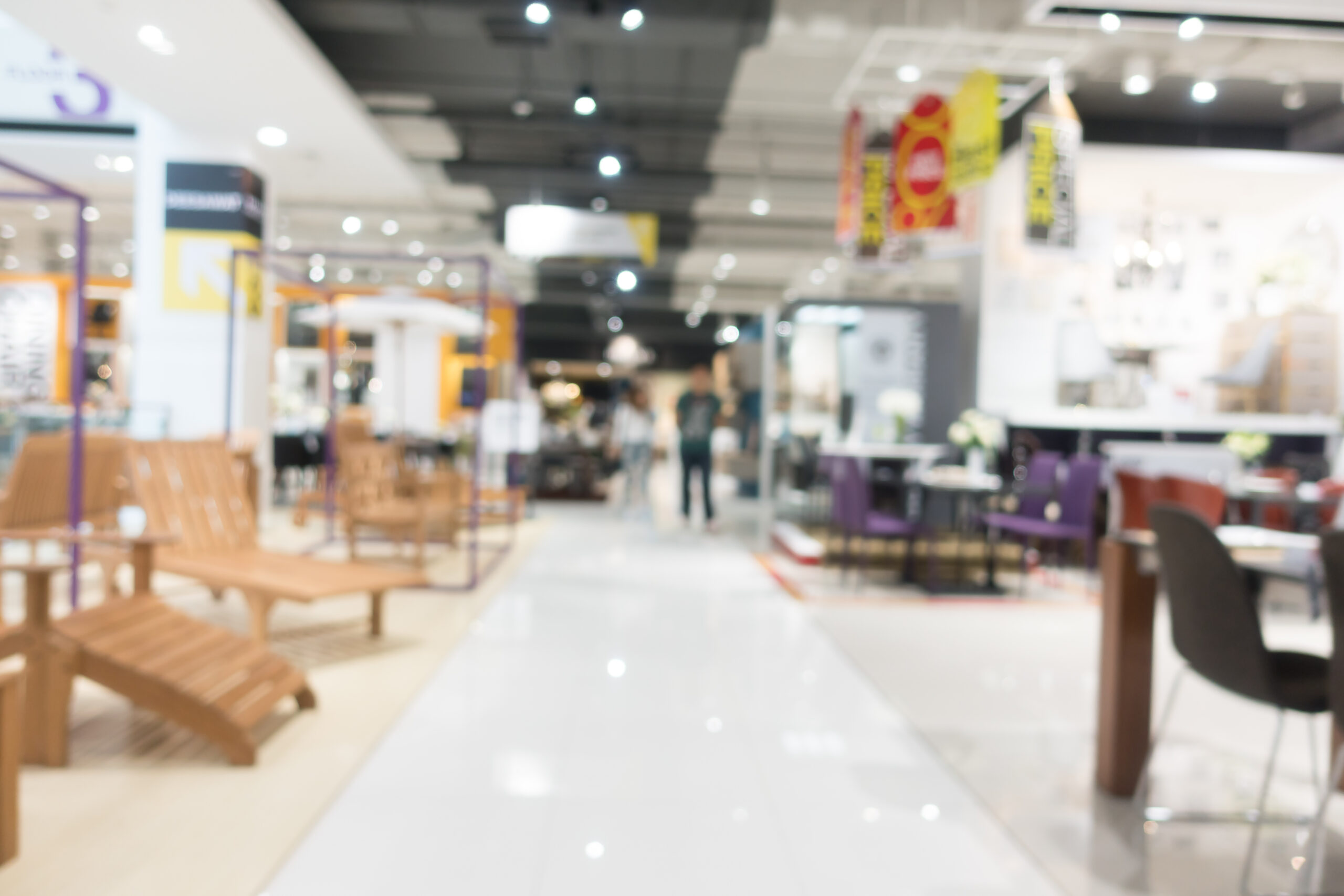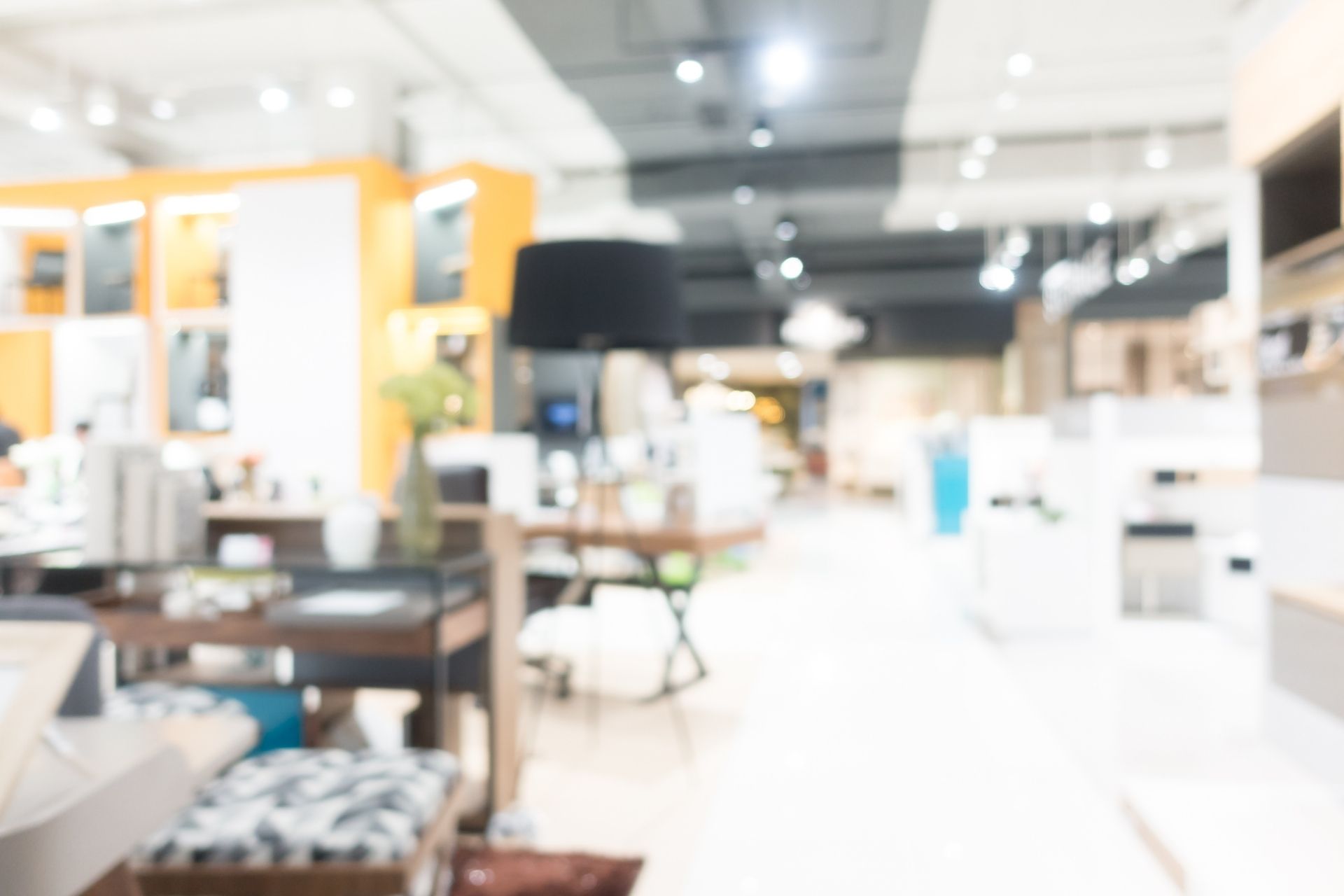Step into a jewelry store in New York, and the layout often decides whether you browse for a minute or stay to discover more. A smart layout doesn’t just show off your pieces — it guides customers, keeps them browsing longer, and encourages them to buy.
When shoppers feel comfortable and engaged, they’re more likely to connect with your brand and return again. In short, the right design can turn visitors into loyal customers.
In this article, we’ll walk through the key elements of jewelry store design, the goals behind an effective layout, and common layout ideas that can help your store shine.
Jewelry Store Design Elements
In a competitive market like New York — where jewelers range from luxury boutiques to family-owned shops in smaller cities — the right design choices can help your store stand out and keep customers coming back. Let’s take a closer look:
Display Cases
Display cases are the heart of any jewelry store. They protect valuable pieces while drawing attention to their beauty. Cases should be positioned so customers can comfortably view items without feeling crowded.
For example, a boutique jewelry shop in Manhattan uses sleek glass cases arranged in a circular pattern, which allows shoppers to flow naturally from one display to the next.
Lighting
Jewelry sparkles best under the right light. Bright, focused lighting makes diamonds and gemstones stand out, while softer lighting can create a warm and welcoming atmosphere.
Entrances & Windows
The entrance and front windows are your first chance to attract attention. A well-designed window display can stop passersby and encourage them to step inside.
Many successful New York City jewelers update their window displays seasonally by featuring engagement rings before Valentine’s Day or colorful gemstones in the summer. They do this to match customer interests and draw foot traffic.
Distinct Zones
Creating distinct zones within your store helps organize the shopping experience. For instance, you might have one area for engagement rings, another for everyday jewelry, and a separate zone for luxury pieces.
Effective Jewelry Store Design Components
While design elements like cases, lighting, and entrances set the foundation, it’s the broader components of your layout that bring everything together. These components make sure your store isn’t just visually appealing, but also practical, memorable, and true to your brand identity.
Brand Consistency
In a jewelry store, every detail should reflect your brand’s personality — whether you focus on luxury, elegance, or everyday style. Consistent branding makes your store recognizable and helps customers feel connected. This includes your colors, materials, and the overall mood of the space.
For multi-brand jewelry stores, balance is key. Each brand should stand out without creating clutter. For example, the jewelry district in Manhattan has shops that carry multiple designers but tie everything together with uniform lighting and coordinated cases. This way, customers enjoy variety while still experiencing a cohesive store design.
Strategic Layout
A strategic layout helps guide customers naturally through your store. By dividing the space into distinct areas — almost like “shops within a shop” — you create a clear path that encourages browsing and discovery.
For example, you might group bridal jewelry in one section, fashion pieces in another, and luxury collections in a separate space.
Zoning
Zoning means arranging your store into clear sections so customers can easily find what they’re looking for. This makes the shopping experience more enjoyable and helps shoppers focus on the pieces that interest them most. Zones also prevent the store from feeling overwhelming by breaking it into manageable areas.
A jeweler in New York might use this approach by giving their handcrafted gemstone pieces a distinct section apart from their timeless gold collections. This would make it easy for customers to explore different styles.
Lighting
Lighting has the power to transform how jewelry looks and feels in a store. The right setup can bring out the sparkle of diamonds, the rich tones of gold, and the unique colors of gemstones, making each piece more appealing to customers.
Many jewelers use layered lighting to achieve this effect — bright spotlights for display cases, softer ambient lighting for comfort, and accent lights for special collections.
Jewelry Store Layout Design Goals
Every element of the layout should work toward guiding shoppers naturally, highlighting products, and reinforcing your brand. Here’s a closer look at the primary goals behind an effective jewelry store design:
Clear Orientation for Customers
Customers should immediately understand the flow of your store. A clear layout helps shoppers navigate easily from one section to another without feeling lost or overwhelmed. Strategic pathways, signage, and distinct zones ensure that customers can find the pieces they’re interested in while also discovering other collections along the way.
Encourages purchases
An effective layout subtly nudges customers toward buying. The goal is to combine visual appeal with persuasive design to boost engagement and sales. You can start by placing high-demand or seasonal items in prominent locations, using attractive displays, and creating areas for exploration.
Functional and Persuasive
Your store needs to balance aesthetics with practicality. Display cases, seating areas, and lighting should not only look good but also enhance the shopping experience.
A functional layout minimizes clutter, prevents congestion, and creates an environment where customers feel comfortable taking their time to browse. At the same time, persuasive elements like focal displays or highlighted collections can draw attention to high-value or promotional items.
Brand Identity
Every detail of your store — from lighting and materials to colors and layout — should reflect your brand’s personality. Whether your image is luxury, modern, or approachable, consistent design builds recognition and trust.
Common Jewelry Store Layout Design Ideas
Choosing the right layout can transform your store from a simple retail space into an engaging shopping experience. Here are five popular design ideas that help jewelers in New York:
Grid Layout
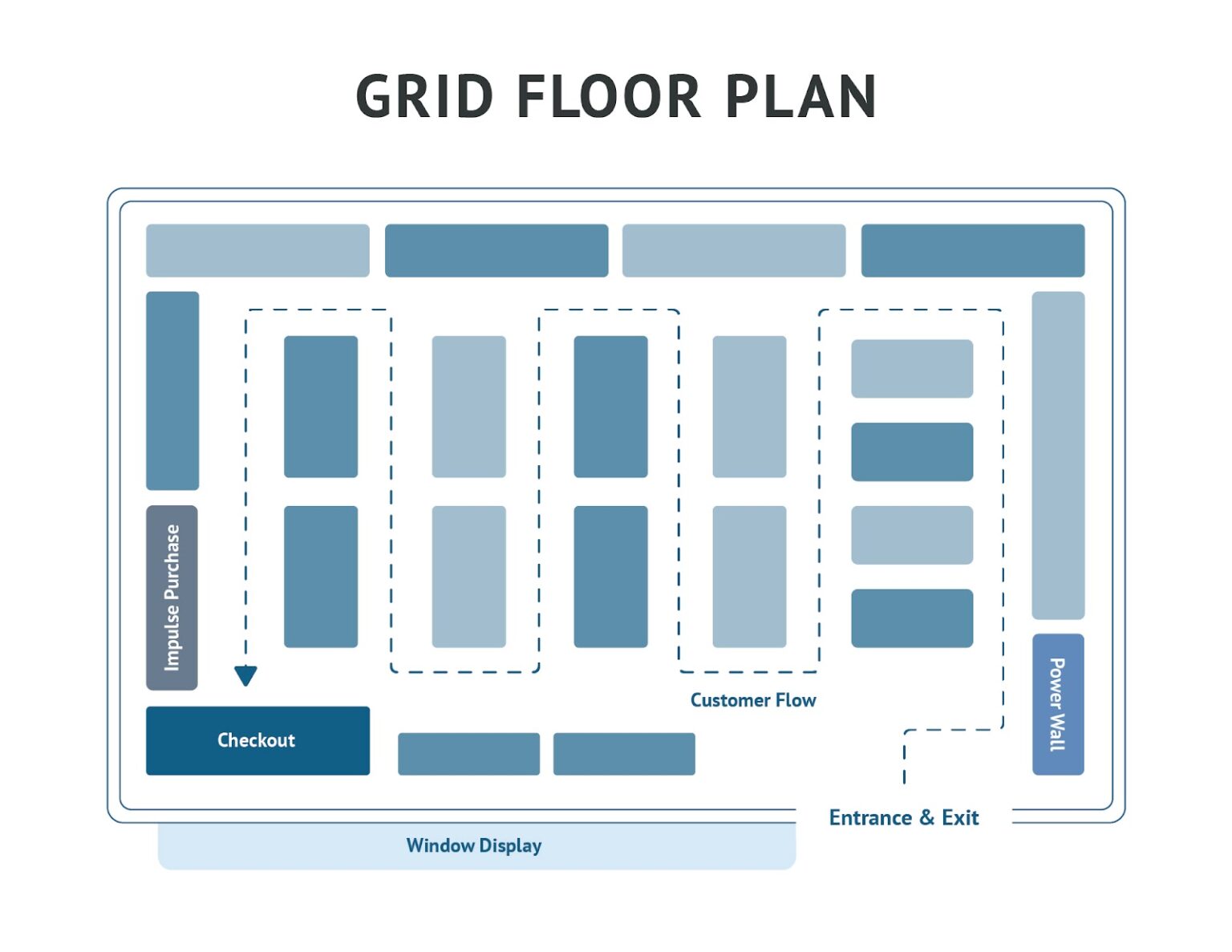
The grid layout arranges display cases in straight lines, similar to a supermarket layout. This design works well for stores with a large inventory, as it maximizes floor space and creates clear, navigable pathways. Customers can move systematically from section to section, so it’s easier to browse and compare items. Choose this layout if you have a mult-brand store.
Loop Layout
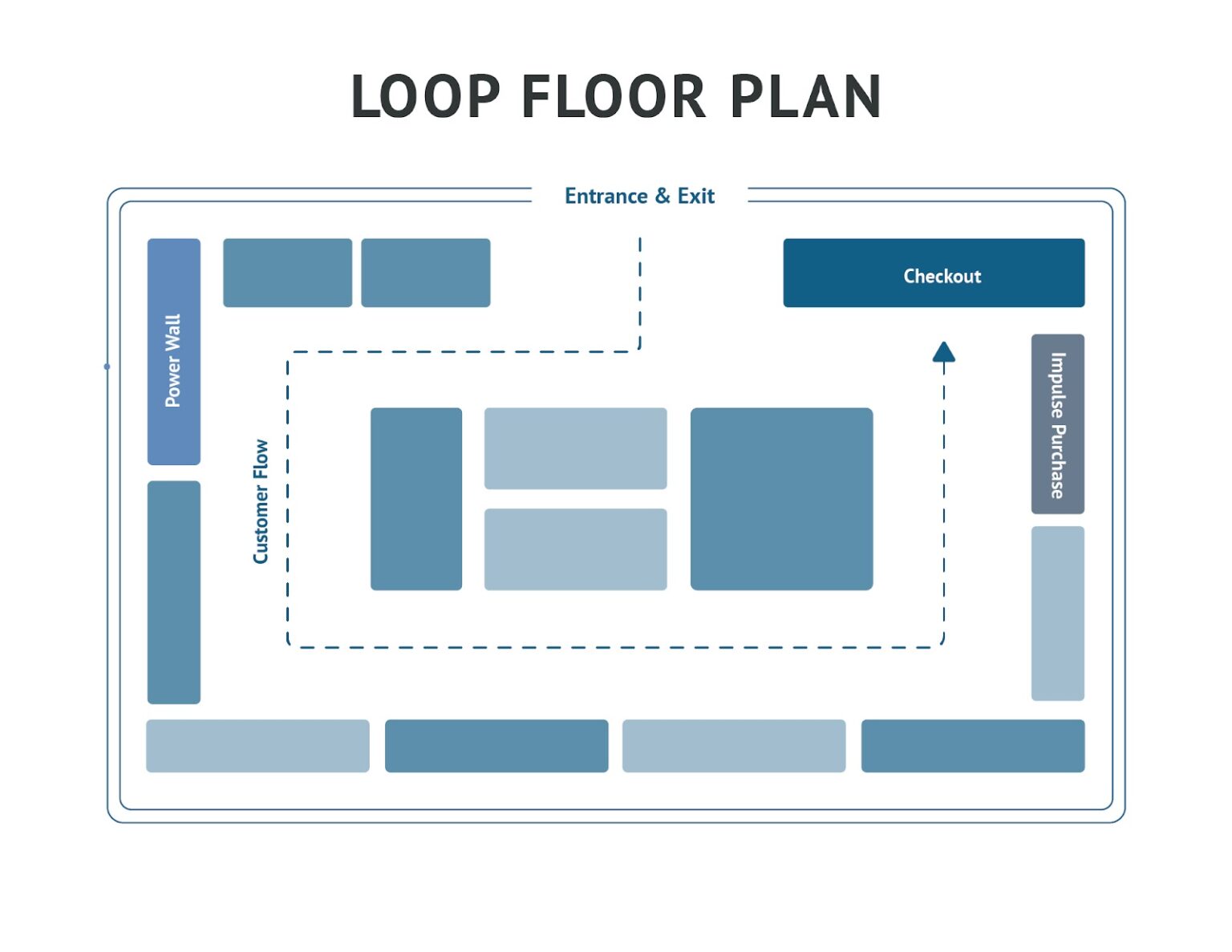
Also called a “racetrack” layout, the loop layout guides customers along a predetermined path through the store. This ensures shoppers encounter all product zones, from engagement rings to luxury collections.
Strategically placed focal points along the loop, such as a featured gemstone display, can draw attention and inspire impulse purchases. For instance, a jeweler in Albany might highlight locally sourced sapphires or seasonal bridal collections at key points along the loop, which creates both a local connection and a sense of discovery for shoppers.
Free-Flow Layout
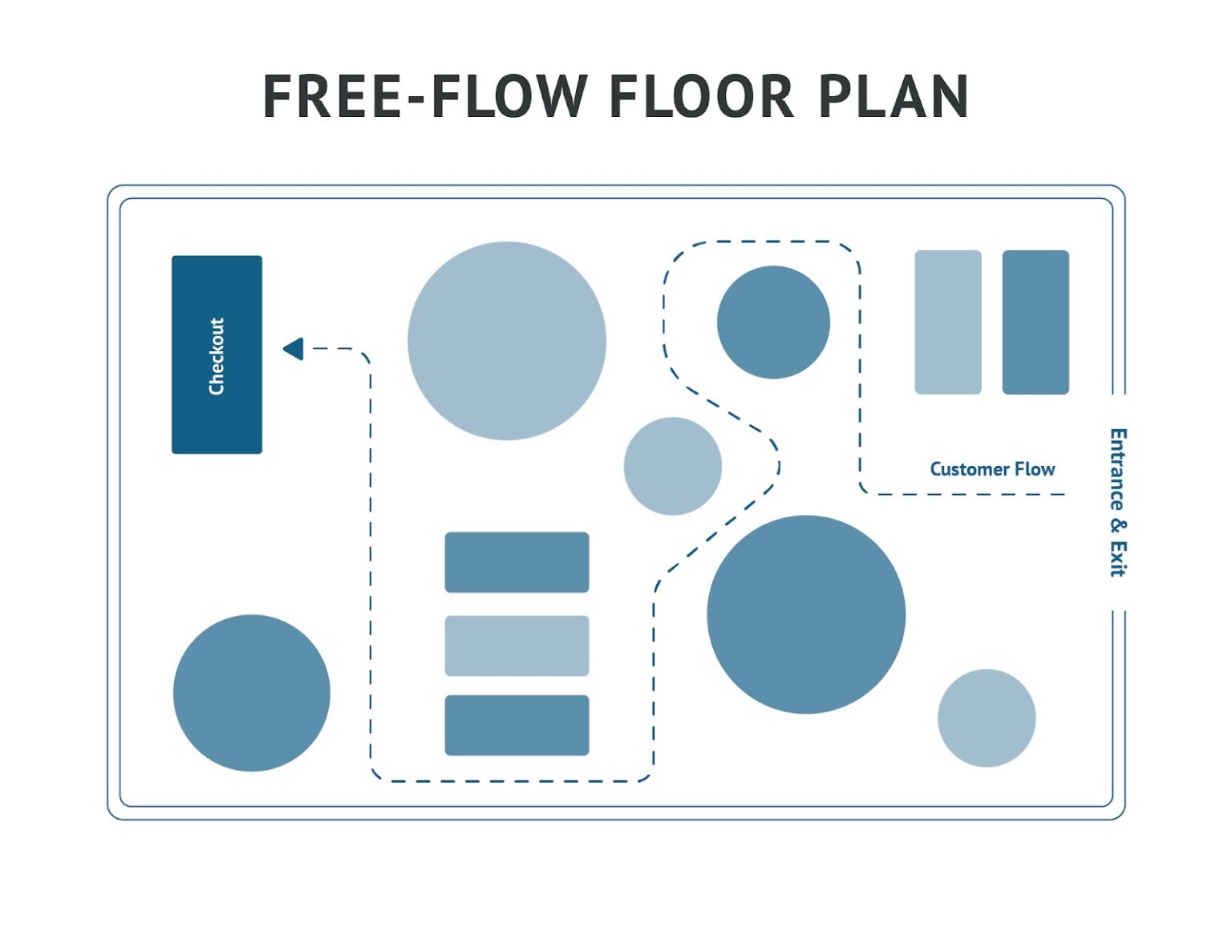
The free-flow layout offers a relaxed and open shopping experience. Displays are arranged asymmetrically, creating a more boutique-like, casual feel. This design works well for stores with smaller inventories or specialty collections.
Boutique Layout
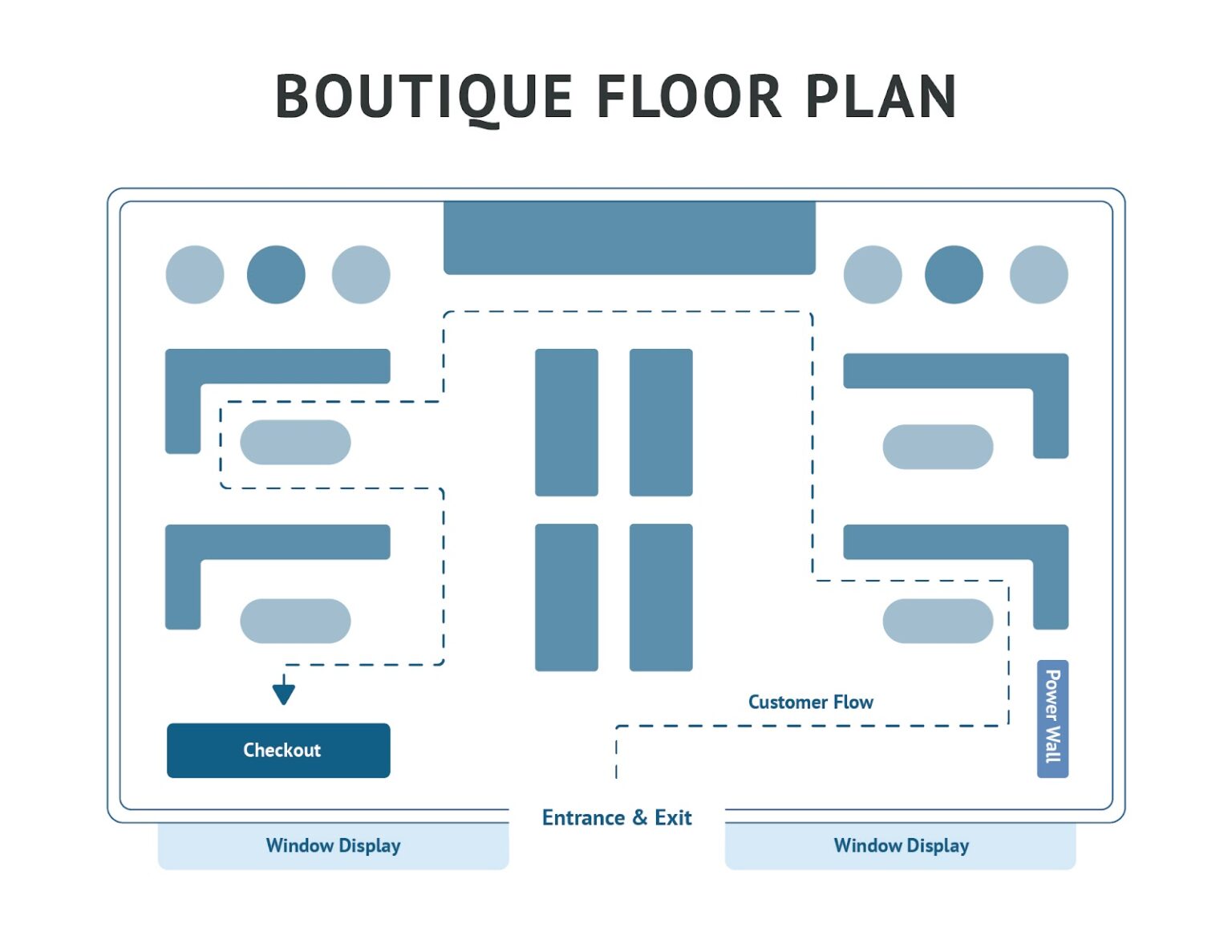
The boutique layout creates “mini-shops” within a single store. Each area is designed to reflect a different style, collection, or brand. For example, one corner may feature classic gold jewelry while another highlights colorful gemstone pieces.
FoundRae’s boutique on Madison Avenue features a soft red cinnabar interior to create an intimate atmosphere. The store includes unique “Discovery Drawers” filled with exclusive, unseen pieces, allowing customers to explore and discover new designs in a personalized setting.
Spine Layout
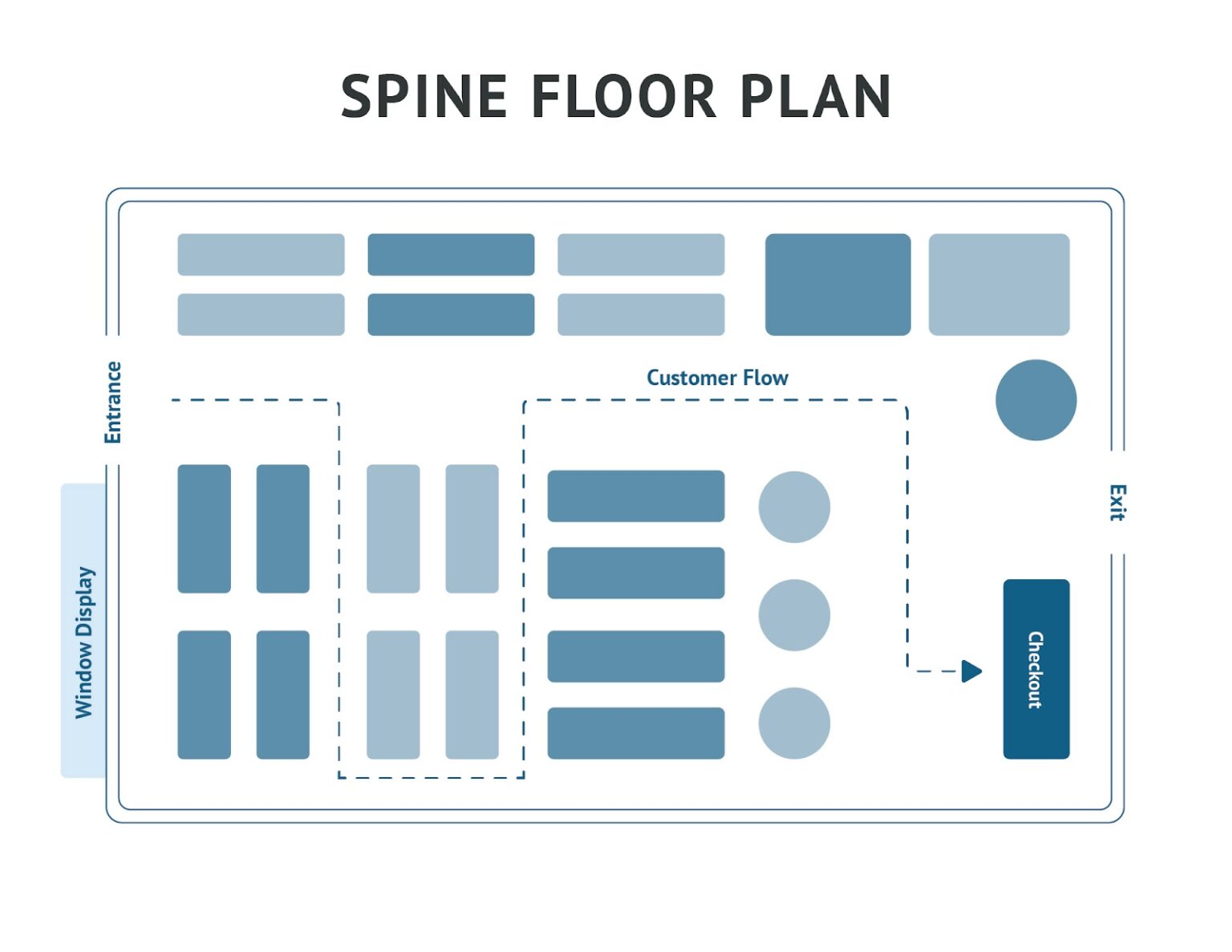
The spine layout features a central aisle — or “spine” — with display cases or zones branching off from it. This design balances flow and visibility. It works well for medium-sized stores, as it encourages movement along the main path while giving customers clear access to every section.
Summary
Whether you choose a grid, loop, free-flow, boutique, or spine layout, the key is to make shopping enjoyable, intuitive, and memorable. As you design your store, keep in mind the essential elements, the broader components, and the overarching goal.
At the end of the day, a well-thought-out layout is about creating a space where customers feel comfortable, engaged, and inspired to explore.
Looking to elevate your jewelry store’s layout in New York? Get started with retail and commercial furniture solutions from Artistic Display.
Frequently Asked Questions
What is the best layout for a small jewelry store?
Free-flow or boutique layouts work best for small stores. These designs create a sense of openness and make the space feel inviting rather than cramped. Strategic use of vertical display cases and mirrors can also help maximize space.
What type of lighting works best for jewelry displays?
Layered lighting is ideal. Use bright, focused lights to make diamonds and gemstones sparkle, softer ambient lights for comfort, and accent lights to highlight special collections.
How do I make my jewelry store more inviting?
Combine clear pathways, comfortable spacing, warm lighting, and distinct zones to create a welcoming environment. Seasonal window displays, focal points, and seating areas for customer comfort can also make your store feel more approachable.

